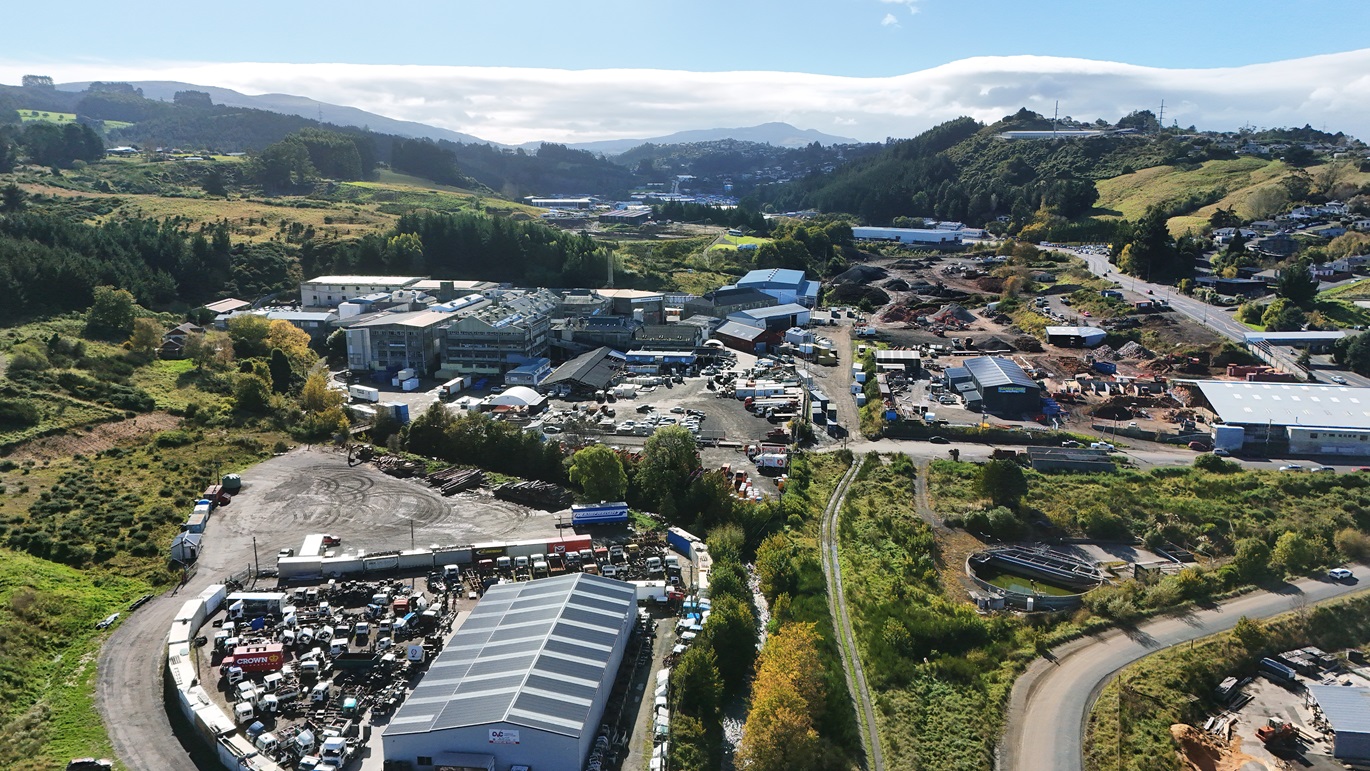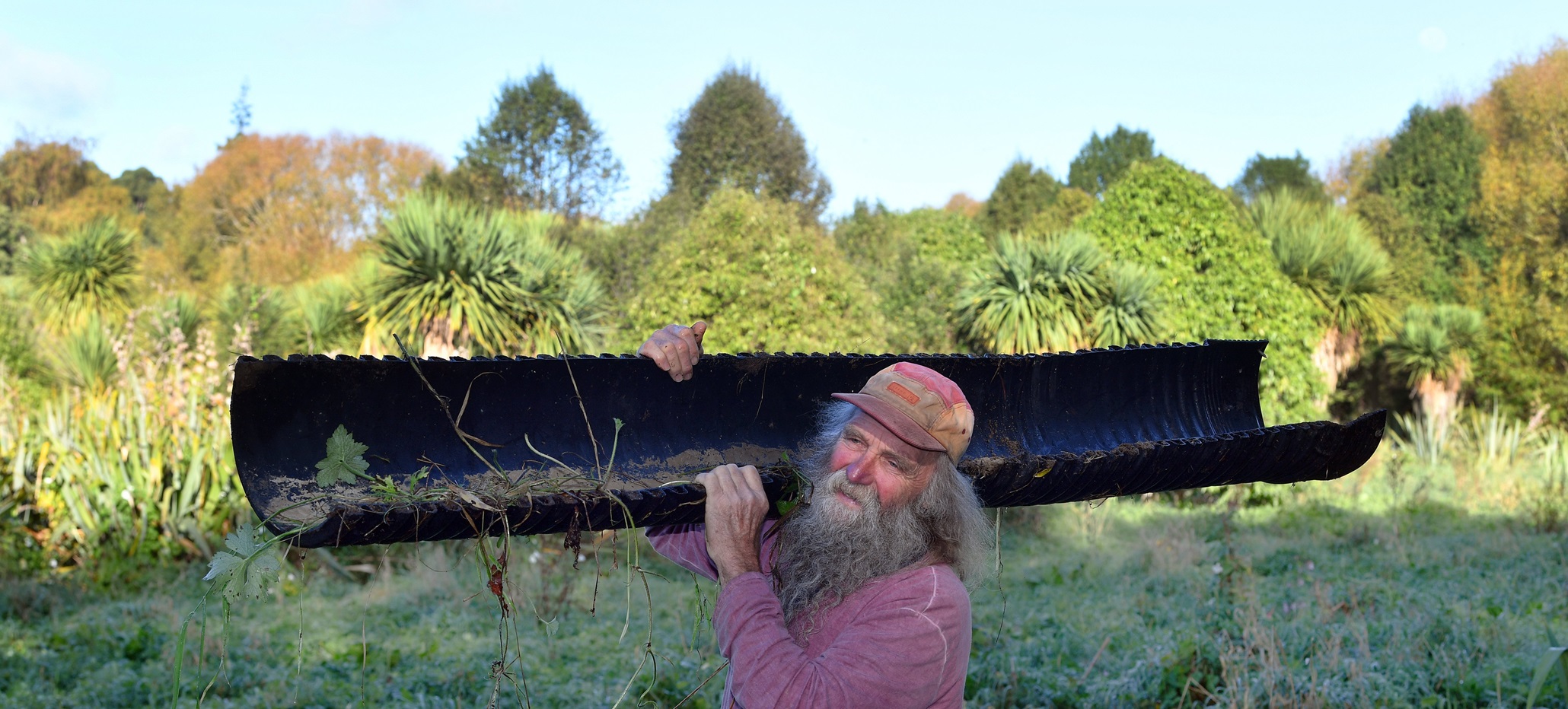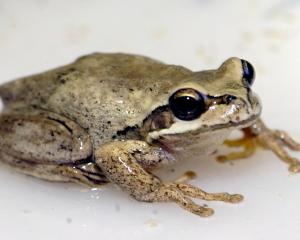
Poisoned repeatedly as it slugs its way through Dunedin’s southern industrial zone, the Kaikorai Stream spews its gutful of garbage and toxins into a large estuary at Green Island and then the Pacific Ocean.
"I wouldn’t put my feet in it, let alone drink it," says Hendrik Koch, manager of the Shetland St community garden at the top of Kaikorai Valley.
Water trickles past his boots, seemingly devoid of life. One time here, it was luminous green.
In 1849, a city settler described the stream as the "purest water", but by 1907 the Otago Daily Times was describing it as a "continuous sewer" and city scandal.
More than a century later, the water agency Lawa reports
E.coli and other pollution readings in the worst category and likely degrading further.
About 7km downstream, a factory worker says the largest thing that floated past their window was a car and the latest thing was a dead elver — a juvenile tuna/eel, one of New Zealand’s precious and declining taonga species.
In the estuary there is a sofa, should anyone care for a ringside view of the stream’s other fallout. Birds stalk among rubber gloves and tyres, unlikely to find an easy feed. The stream’s water quality is tested as terrible and insect counts are low.
University of Otago freshwater ecologist Gerry Closs says it is tricky to finger-point polluters because there are so many potential sources. Water can be soiled from dumping, from 250 storm drains that pipe straight in and from surface runoff including toxic dust from roads.
The stream’s water may be murky, but it is clear it needs rescuing.
Aroha/Love Kaikorai Valley Trust (AKV) has a vision of clean water to the ocean and does things such as stream cleanups and predator trapping. One volunteer, Charlotte Garchow, is just 12 years old. She has a message for any purposeful polluters who don’t get in the waka, grab an oar and paddle like fury to restore the stream’s life for fish, birds and everyone.

"They are maybe not helping the world and making it a worse place to be in, so I hope they listen."
The journey
When Tania Sharee Williams (Ngāpuhi) was a child, she used to swim in the stream and eat kura/crayfish from it. She is manager of Araiteuru Marae, next to the community gardens.
"Ko au te awa, ko te awa ko au", she says. I am the river, the river is me.
The stream’s Māori name, Kaikarae, is two words: kai/food and karae/seabird. For centuries, Kaikorai Valley was a Māori walking route, with food on the way because its valley and estuary teemed with fish and birds.
Now, cars swing in to Kaikorai Valley Rd between the pillars of KFC and Subway and the stream is invisible from behind the wheel. On foot it can be found on the left, trapped between warehouses and factories, swapping to the right around Kaikorai Valley College, then descending to industrial yards, a tip at Burnside, and finally under the Southern Motorway to the council-owned Green Island tip at the estuary’s edge.
Its journey passes through private land parcels and is physically impassable when forced under roads, into concrete channels and even through buildings.
Unsurprisingly, numbers of macroinvertebrates — mayflies and other critters that fish and birds rely on for food — are in the lowest category.
The Dunedin City Council says that its draft 9-year plan includes measures to improve the city’s streams, but adds that streams that discharge into the harbour are being prioritised above the Kaikorai catchment.
Hanging on
There are two, short stretches where the public can, in theory, meet the stream. Kaikorai Common is between Shetland St and Taieri Rd and there is a stream-side path between Donald St and Townleys Rd, but it is currently fenced off and the council couldn’t say when it would reopen.

"It’s where people come to relax," he says.
Another green patch, at Kaikorai Valley College, gives learning opportunities. Head of science and longtime stream advocate Dr Simon McMillan, an AKV trustee, points to water edged by trees but no other evidence of nature. Water testing has revealed e-DNA evidence that the chronically threatened longfin eel has been here.
"It goes to show that some parts of the stream are holding on to their life, but if I go in and had a look around for some invertebrates, it would be a different story. An eel is hardier than your average mayfly."
He suspects any surviving eels, which live for years but eventually must try to migrate to the ocean to breed, may be constrained to patches of the stream due to weirs and other barriers.
Catchment
The stream has a catchment of more than 40sq km, reaching well beyond the businesses lining Kaikorai Valley Rd.
Water flows from tributaries, including one from the flanks of Flagstaff and Wakari into Fraser’s Creek and another from around the Balmacewen Golf Course.
It travels through businesses, construction sites, roads and about 20,000 homes.
There is likely uninformed polluting by people washing cars and paint brushes into drains. Detergents, paint, oil, dyes, solvents, bleach, concrete, fertilisers, battery acid, general rubbish and more are mentioned in an Otago Regional Council campaign called "only drain rain".
The ORC can, with the other hand, grant corporates consents that include permission to drain pollutants in certain circumstances.
Mr Koch, the community garden manager, says streams can become "informal tips" and corporate permissions to pollute are "remarkable".

Asphalt
Slightly before Kaikorai Valley Rd meets the Southern Motorway there is a suburb called Burnside. It is a fiery name for a hard yard where diggers and machinery move and sift steaming asphalt and concrete and the abandoned meat works looms in the background.
The stream loops through it all.
Doug Hall, owner of excavation and demolition operator Hall Bros Transport and former councillor, has owned the site since 2021. A sign advises visitors to report, but after finding no office to report to, and no evidence of stream-side planting, I rang Mr Hall.
He said the yard was previously a "bomb site" covered in broom and gorse. When asked if he would plant natives around the stream’s banks, he said he would, but it could take him a decade. He then revised his answer to "in the long term" and "when I get around to it".
He hadn’t heard of the community group AKV.
When asked how he would respond if someone in the community asked him to plant trees around the stream, he replied: "They can go to hell. Unless they want to pay for it and do it."
He complained about "do-gooders, who can please their bloody selves".
In the stream, there was rubble and rubbish including a large wheel.
Coincidentally, Hall Bros Transport’s website is created by Turboweb, a design firm owned by AKV chairman Paul Southworth.
Mr Southworth says AKV wants to help businesses understand the stream exists, needs saving and companies can help by taking steps to stop risk of pollution from their own businesses.
"Water testing has been done to death. The stream slowly degrades as it goes down ... We are educators, collecting good people to do good stuff. It’s what you do.

Mr Koch, the community garden manager, says broom and gorse are good for insects and birdlife.
Industrial activities that operate with council consents are required to meet any environmental conditions and be audited. Neither ORC nor the DCC was able to forward any consents required by Mr Hall to operate his yard.
The DCC said Mr Hall’s screening yard was permitted within the industrial zone and the council had "no power to compel planting on private property", unless consenting a subdivision.
The council forwarded a consent application granted in 2011 when Mr Hall didn’t own the site. It allowed excavation rubble to be put on the site that had been dug up when rerouting State Highway 88 and building Forsyth Barr Stadium. The consent application said there was an "indication" that the site would then be planted for "visual mitigation and rehabilitation".
Despite Mr Hall promising planting nearly a quarter of a century after it was expected, a DCC spokesperson said his plan was "positive".
Glimmers of hope
There’s surely no life under the former meat works. The stream emerges from under it, in a concrete channel, at the Japanese Auto Wreckers yard. It’s a desolate spot. "Nobody wants to see this," boss Ricky Cockburn agrees.
He hadn’t heard of AKV, but said that he would give something, either labour or money, if asked to help.
Just downstream, arborist firm Treeman has started native planting along 100m of stream bank and is feeding a dozen longfin eels.
It is a glimmer of hope or pointless effort. Arborist Nick Boereboom says a sheen of diesel has run across the whole stream, killing vegetation. More recently, further upstream, someone else noticed an eel-catching net.
Mr Boereboom describes nature as being "squeezed out ... Someone has to care about the stream, otherwise it just gets forgotten".

After passing the tip and ducking under the motorway, the stream reaches hundreds of ducks at Harraways Oats factory in Green Island, where there are oats but no duck-shooters. Fish & Game has tried moving them, but the ducks return because it is "just too tantalising", environmental officer Nigel Paragreen says.
Possibility still
Further down, where stream meets estuary, Mr Koch has led a 19-year community tree-planting effort and gives the ODT a tour of manatu (ribbonwood) and harakeke (flax), while picking his way through rubbish, much of it half-buried.
Some rubbish is removed but it just keeps on coming downstream, along with oils, heavy metals and plastic particles, he says.
Two hectares have been planted with 15,000 trees. It’s an incredible effort, but less than 0.05% of the stream’s catchment.
"How many people think their paint containers needs a wash out down the storm drain? The water is probably more toxic than the sewers and it isn’t that people are indifferent or don’t care, they just don’t know."
Ms Williams, at the marae, celebrates efforts to save the stream and opportunities for people to learn more and take shared responsibility.
Stories about our rivers, and how they are a source of our life, running from the mountains to the sea, foster connection between one another and nature and without these stories it is a "free-for-all and you don’t have to be accountable".
"The river asks for nothing in return and does its best to provide. There is only one hiccup in this picture, which is our disconnect from nature. When we give freely and unconditionally, as nature does, then everything and everyone can be better off.
"Some people will say that is airy-fairy, but others will say that is a total possibility."












